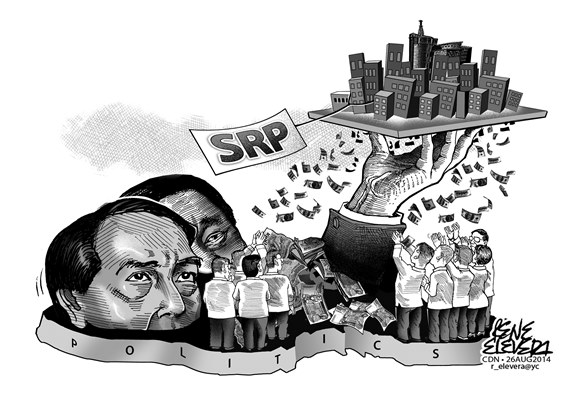While it’s almost inevitable that partisan politics plays a role in shaping governance and policies, we can only hope it doesn’t distort decisions in how the Cebu City government handles its centerpiece project, the multi-billion peso South Road Properties (SRP).
The four councilors who bolted the Bando Osmeña-Pundok Kauswagan (BO-PK) camp cited public interest as an overriding factor in voting for a resolution authorizing Cebu City Mayor Michael Rama to sell the SRP lots through public auction.
One of the four, Gerardo Carillo, is against Rama’s plan to contract another loan, this time with the Land Bank of the Philippines (LBP), to pay the remaining balance of Cebu City’s P2.9-billion SRP loan with the Japan International Cooperation Agency (JICA).
However, Councilor Noel Wenceslao did propose — and the city accountant supported the basis – for the conversion of the city’s loan from yen to pesos to reduce high interest charges brought about by currency fluctuations.
This would mean having Cebu City contract a loan directly with the LBP which will now stand as the city’s main creditor rather than the national government.
Former mayor Tomas Osmeña, the brains behind the SRP project, said the conversion plan “pretty good” but said that Cebu City wouldn’t be able to qualify for a Land Bank loan after failing to get a seal of good housekeeping from the Department of Interior and Local Governments (DILG) for three years.
Since the SRP is here to stay, Cebu City officials should take time to discuss how best to proceed with these options.
These are technical financial factors to consider, a decision the public should be fully informed about and which experts in the private sector can be called upon to advise.
After all, this is public property for which taxpayers will have to pay the amortization until 2025.
The goal is to get the most out of Cebu City’s reclaimed land without sacrificing its value in the long term, something Osmeña has been stressing.
Is public auction more beneficial than an unsolicited bid?
Should Cebu City government sell 45 hectares – lots adjacent to ongoing commercial developments of Filinvest and SM Seaside City – right away or later?
Why is the floor price set at P20,000 per square meter? What terms can safeguard against buyers sitting on the land for speculation, the way the North Reclamation Project was long treated?
With public attention focused on the political defection of Osmeña’s allies, we hope more in-depth discussion focuses on the pros and cons of how the City Council and mayor are disposing of precious real estate.
The final decision will have lasting consequences on the financial affairs of Cebu City beyod 2016, so officials should take the long view in carving up a 300-hectare cash cow rather than stir the fire for some quick-serve steak.
Disclaimer: The comments uploaded on this site do not necessarily represent or reflect the views of management and owner of Cebudailynews. We reserve the right to exclude comments that we deem to be inconsistent with our editorial standards.

